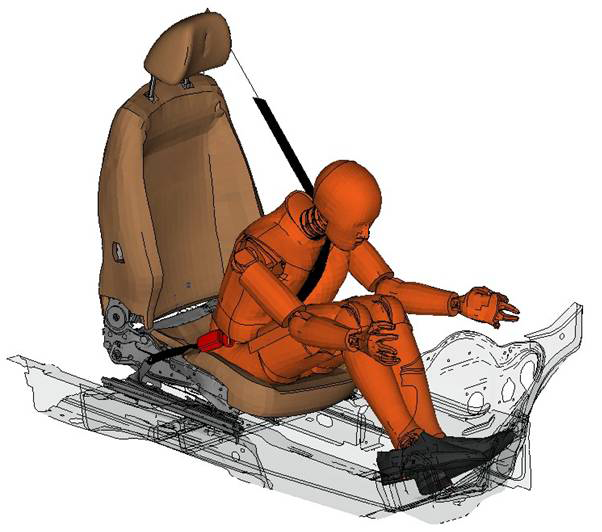MpCCI Mapper improves crash simulations
The models used in crash simulations are idealized – they usually do not take production-related local changes in geometry or material properties into account. The MPCCI Mapper helps to increase the informative value of crash calculations by integrating the results of manufacturing history into the crash model.
The behavior of relevant components during a crash is a function not only of their design but also of their manufacturing history. If crash models are to be more realistic, manufacturing-related information on local geometries and material parameters from the forming simulation or other processing simulations must also be applied to the crash model. This is why the Fraunhofer Institute SCAI developed the MPCCI Mapper software as part of a project with the German Association of the Automotive Industry. The MPCCI Mapper offers a function that enables models with incompatible relative positions to be aligned with one another in the coordinate system. Mapping functions for material thickness, pressure and tensile load, and other element or node-based data, and the option of inserting information about unit systems, support integration in the process chain.
The MPCCI Mapper offers a validation model for analyzing the quantities mapped. For validation, the association and nodal distances of the coupled models, together with the local differences of original and transferred values, are calculated and visualized. All of the functions in the MPCCI Mapper can be interactively controlled using a graphic interface. The MPCCI Mapper helps to load source and to target grids by supporting many of the codes used in file formats in forming and crash simulations:
- Abaqus (read/write .inp files)
- Indeed (read .gns)
- LS-DYNA (read/write keyword files)
- PAM-STAMP PAM-CRASH (read/write mapping files, read keyword files)
- Radioss (read D00 starter input, read/write Ynnn output file)
- Nastran (read, patch)
- Sysweld (read .asc, write, patch)

